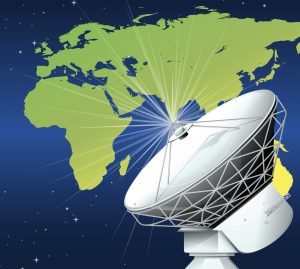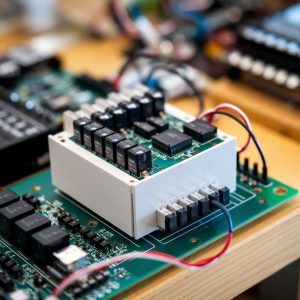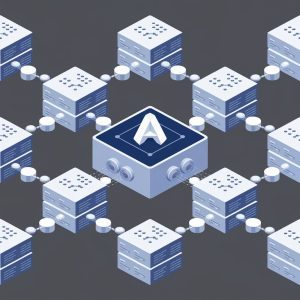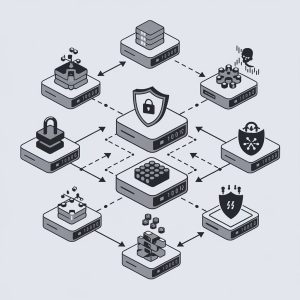Items of № 7, 2024
THE BASIC PRINCIPLES OF BUILDING MODELS OF PROMISING HYBRID GROUND-SPACE COMMUNICATION SYSTEMS
I.N. Panteleimonov, The M.I. Krivosheev Radio Research & Development Institute (NIIR), head of laboratory; panteleimonov@niir.ru
Keywords: terrestrial and space communication systems, model, interaction hierarchy level, satellite communication network, satellite Internet, Internet network, satellite repeater, spacecraft, subscriber terminal, communication line.
A description of models and levels of interaction of technologies, systems and elements is presented in order to form a system approach necessary for the analysis and synthesis of advanced hybrid ground-space communication systems.
________________________________________________________________________________________________________________
METHODOLOGY OF TRAFFIC PRIORITIZATION IN SATELLITE COMMUNICATION CHANNELS BASED ON ARTIFICIAL INTELLIGENCE. PART II. EVALUATION OF PACKETS LOSSES
Ph.H. Do, The Bonch-Bruevich Saint-Petersburg State University of Telecommunications (SPbSUT), postgraduate; haodp@dau.edu.vn
A.A. Berezkin, SPbSUT, associate professor, Ph.D.; berezkin.aa@sut.ru
A.V. Borodko, SPbSUT, associate professor, Ph.D.; borodko.av@sut.ru
R.V. Kirichek, SPbSUT, rector, professor, Dr.Sci.(Tech.); kirichek@sut.ru
Keywords: satellite communication, artificial intelligence, QoS, traffic prioritization, packet loss.
This study introduces an approach for constructing satellite communication networks based on artificial intelligence to improve the efficiency of satellite communication by dynamically predicting and prioritizing traffic. For transmission over satellite communication networks, user traffic is organized into queues with priority, according to the assigned priority levels for each type of traffic. The second part of the article provides a detailed comparative analysis of the packet loss rate based on the proposed methodology for prioritizing traffic based on artificial intelligence in satellite communication networks.
________________________________________________________________________________________________________________
ANALYSIS OF LOW ORBIT SATELLITE BROADBAND ACCESS SYSTEMS USING THE EXAMPLE OF STARLINK DEVELOPMENT
Yu.M. Urlichich, The M.I. Krivosheev Radio Research & Development Institute (NIIR), adviser director general, professor, Dr.Sci.(Tech.); yury.urlichich@mail.ru
Keywords: low-orbit system, satellite communications, Starlink, broadband access.
Estimates of the required scanning angle of the active phased array of the Starlink user terminal and the potential for reducing its cost depending on the number of satellites in the orbital constellation of the satellite broadband access system are presented. It is shown that it is possible to significantly reduce the cost of a user terminal if the number of satellites in the orbital constellation reaches several tens of thousands. An analysis of the pace of growth of the orbital constellation and the subscriber base of the Starlink system is presented. The results of the analysis show a significant delay from the plans outlined in the Starlink business model, the inexpediency of creating commercial low-orbit satellite broadband access systems to solve the problem of queuing, and the need to find new system solutions, in particular the creation of direct-to-device type systems.
________________________________________________________________________________________________________________
APPLYING INTELLIGENT REFLECTIVE SURFACES TO IMPROVE SNR IN LOW-EARTH ORBIT SATELLITE COMMUNICATION SYSTEMS
Kh.M. Yahia, Moscow Technical University of Communications and Informatics (MTUCI), postgraduate; khalilmohyahia@gmail.com
D.A. Klimov, The M.I. Krivosheev Radio Research & Development Institute (NIIR), director of the directorate of the Central Scientific Research Institute of Communication, MTUCI, associate professor, Ph.D.; klimovda@niir.ru
Keywords: reconfigurable intelligent surface, RIS, intelligent reflecting surface, IRS, satellite systems, low earth orbit, LEO.
The effect of intelligent reflective surfaces on reducing signal attenuation on the downlink of a satellite located in low Earth orbit is considered. The influence of the number of elements of the reflective surface and the user’s location on the quality of the signal and the maximum throughput of the communication channel is analyzed.
________________________________________________________________________________________________________________
RESEARCH OF LATENT SPACE QUANTIZATION METHODS OF VARIATIONAL AUTOENCODER FOR FPV VIDEO STREAM FRAMES. PART II
А.A. Berezkin, The Bonch-Bruevich State university of telecommunications (SPbSUT), associate professor, Ph.D.; berezkin.aa@sut.ru
A.A. Chenskiy, SPbSUT, masters student; chenskii.aa@sut.ru
R.M. Vivchar, SPbSUT, associate professor, Ph.D.; vivchar.rm@sut.ru
R.V. Kirichek, SPbSUT, rector, professor, Dr.Sci.(Tech.); kirichek@sut.ru
Keywords: variational autoencoder, quantization, data compression, neural networks, latent space compression, video stream compression.
One of the ways to improve the efficiency of mobile and hybrid orbital-terrestrial communication networks used to transmit video stream frames when controlling unmanned aerial vehicles (UAVs) in first person view (FPV) mode is to reduce the required bandwidth for each UAV. This requires ensuring a high degree of frame compression while maintaining their quality. To solve this problem, methods based on the application of variational autoencoders that perform frame encoding into the latent feature space of the neural network, quantization and lossless compression are used. In the second part of this paper the results of estimation of influence of applying different quantization algorithms on the latent space compression ratio of VQVAE-f16 variational autoencoder from the composition of Stable Diffusion models of lossless compression methods with the help of LZMA algorithm are presented. Recommendations are given on the use of the most effective quantization algorithms when they are used together with lossless compression algorithms.
________________________________________________________________________________________________________________
INTERFACE FOR METAVERSE INTERACTION
A.N. Volkov, The Bonch-Bruevich Saint-Petersburg State University of Telecommunications (SPbSUT), department of communication networks and data transmission, associate professor, Ph.D.; artemanv.work@gmail.com
Keywords: multiverses, telepresence suit, analog-to-digital conversion, signal recovery error.
The article provides research on one of the interfaces for interaction with the metaverse (multiverse) and its objects – a telepresence suit. The work provides a model of a telepresence suit that describes the process of generating state data and transmitting it to a destination point, which can be a robot avatar or a virtual replica. The paper provides an analysis of the main characteristics of typical signals generated by the suit’s sensors. The definition of the error introduced by signal conversion and transmission processes is given, and the problem of minimizing the introduced error is formulated. The work also formulates the problem of selecting the bit capacity of analog-to-digital converters of a telepresence suit as a problem of optimizing conditional costs caused by the introduced error. The proposed method makes it possible to increase the efficiency of solving control problems by reducing the errors of the most significant signals.
________________________________________________________________________________________________________________
GENERALIZED MODEL OF THE LIGHT PATH IN OPTICAL TRANSPORT NETWORKS BASED ON RECONFIGURABLE OPTICAL INPUT/OUTPUT MULTIPLEXERS
S.A. Iasinskii, S.M. Budyonny’s Military Academy of Communications, professor, Dr.Sci.(Tech.); yasinsky777@mail.ru
A.P. Boyko, S.M. Budyonny’s Military Academy of Communications, associate professor, Ph.D.; varenyxa89@gmail.com
S.M. Odoevsky, St. Petersburg State Maritime Technical University, professor, Dr.Sci.(Tech.); odse2017@mail.ru
Keywords: optical transport network, light paths, transmission quality, spectrum distribution.
The article gives a strict definition of the light path. The concept of the light path has been expanded and clarified by combining the signal path and the assigned frequency band. The properties and requirements for light paths are expressed in terms of elementary frequency intervals into which the spectrum is divided in flexible optical networks, which makes it possible to simplify some calculations related to the suitability test. A light path quality metric is proposed that takes into account linear signals in a closed form, on the basis of which a set of acceptable light paths is formed. A number of possible optimality criteria for solving the problems of the search and distribution of light paths are presented.
________________________________________________________________________________________________________________
THE EVOLUTION OF TELECOM OPERATOR WFM: CHALLENGES, APPROACHES, MODELS
B.S. Goldstein, professor, Dr.Sci.(Tech.); bgold@niits.ru
M.A. Fenomenov, LLC RDC Argus, technical director; M.Fenomenov@argustelecom.ru
Keywords: WFM, workforce management, IT landscape, OSS/BSS, probabilistic-temporal characteristics, WFM, TeleManagement Forum, Operation Support System/Business Support System, SLA, service level agreement.
The functionality of a telecom operator’s workforce management (WFM) system in the process of evolution of PSTN-ISDN-PLMN-NGN-IMS-LTE-5/6G communication networks is considered. The role of WFM in OSS/BSS telecommunication management systems, the place of WFM in the telecom operator’s process map and TeleManagement Forum standards, and interaction with related subsystems of the telecom operator’s IT landscape are described. The evolution of WFM models since the times of Egyptian pyramid construction is described. Some modern approaches to mathematical models of WFM and variants of realization of these systems are analyzed. A mathematical model of WFM of post-NGN communication operator is proposed.









